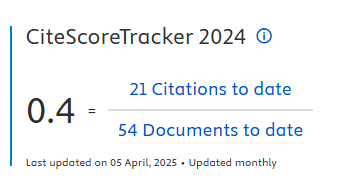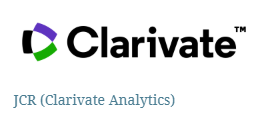Relationship between organizational culture and business innovation in micro and small enterprises
DOI:
https://doi.org/10.5585/iji.v10i4.21166Keywords:
Organizational culture, Innovation, Micro and small enterprises.Abstract
Objective of the study: To analyze the relationship between predominant organizational culture and business innovation capacity in Micro and Small Enterprises (MSEs).
Methodology: Thirty MSEs were selected for this study. The organizational cultural model was identified through the OCAI questionnaire, and the modified innovation radar classified the degree of innovation. The D'Agostinho test (p<0.01) and the Spearman correlation were used to evaluate normality and identify the relationship between the variables, respectively.
Originality/Relevance: The OCAI questionnaire and the innovation radar are research tools that have not yet been used together in studies related to the context of MSEs, according to the narrative review of the literature conducted.
Results: The organizational culture models predominant in the thirty companies participating in this work were identified as clan, hierarchical, and market types using the OCAI questionnaire. The results obtained indicate that the predominant organizational culture is complemented by characteristics of other cultures to a greater or lesser extent. Furthermore, most companies showed a low degree of innovation. We found a strong and positive relationship between the variables, i.e., the degree of innovation increases with the improvement of the organizational culture, prevailing in the context of the thirty MSEs studied.
Theoretical/methodological contributions: This study's data collection and treatment structure can be replicated in other cities or regions.
Social/Management Contributions: This study provides a framework for assessing the relationship between organizational culture and the degree of innovation in MSEs.
Downloads
References
Aboramadan, M., Albashiti, B., Alharazin, H., & Zaidoune, S. (2020). Organizational culture, innovation and performance: a study from a non-western context. Journal of Management Development, 39(4), 437–451. https://doi.org/10.1108/JMD-06-2019-0253
ASN. (2022). Sebrae-SP promove Semana do Empreendedor no Vale do Paraíba e Litoral Norte. Retrieved April 29, 2022, from https://sebrae-sp.jusbrasil.com.br/
Büschgens, T., Bausch, A., & Balkin, D. B. (2013). Organizational Culture and Innovation: A Meta-Analytic Review. Journal of Product Innovation Management, 30(4), 763–781. https://doi.org/10.1111/jpim.12021
Çakar, N. D., & Ertürk, A. (2010). Comparing Innovation Capability of Small and Medium-Sized Enterprises: Examining the Effects of Organizational Culture and Empowerment. Journal of Small Business Management, 48(3), 325–359. https://doi.org/10.1111/j.1540-627X.2010.00297.x
Cameron, K. S. (2009). An Introduction to the Competing Values Framework. In K. S. Cameron & R. E. Quinn (Eds.), Organizational culture white paper (1st ed., Vol. 3, p. 4). Haworth.
Cameron, K. S., & Quinn, R. E. (1999). Diagnosing and changing organizational culture: Based on the competing values framework. (Addison-Wesley series on organization development, Ed.) (1st ed.). Massachusetts: Addison-Wesley.
Cameron, K. S., & Quinn, R. E. (2006). Diagnosing and changing organizational culture: Based on the competing values framework. (The Jossey-Bass business & management series, Ed.) (2nd ed.). San Francisco: John Wiley & Sons.
Cameron, K. S., & Quinn, R. E. (2011). Diagnosing and changing organizational culture: Based on the competing values framework. (Jossey-Bass, Ed.) (3rd ed.). San Francisco: John Wiley & Sons.
Carvalho, G. D. G., Almeida, M. C. A. dos A., Quandt, C. O., Carvalho, H. G., Westarb Cruz, J. A., & Veiga, C. P. (2016). Estrutura de agrupamento das dimensões do radar da inovação de micro e pequenas empresas no Brasil. Espacios, 37(23), 19.
Choi, Y. S., Seo, M., Scott, D., & Martin, J. (2010). Validation of the organizational culture assessment instrument: An application of the Korean version. Journal of Sport Management, 24(2), 169–189. https://doi.org/10.1123/jsm.24.2.169
CNI. (2015). Pesquisa sobre Inovação no Brasil. Retrieved from https://static.portaldaindustria.com.br/legacy/app/conteudo_18/2015/05/12/8750/1205-PesquisasobreInovao.pdf
Cohen, J. (1992). Statistical Power Analysis. Current Directions in Psychological Science, 1(3), 98–101. https://doi.org/10.1111/1467-8721.ep10768783
Deshpande, R., Farley, J. U., & Webster, F. E. (1993). Corporate Culture, Customer Orientation, and Innovativeness in Japanese Firms: A Quadrad Analysis. Journal of Marketing, 57(1), 23. https://doi.org/10.2307/1252055
Dulaimi, M., & Hartmann, A. (2006). The role of organizational culture in motivating innovative behaviour in construction firms. Construction Innovation, 6(3), 159–172. https://doi.org/10.1108/14714170610710712
Elkhouly, S. M. E., & Marwan, R. M. (2016). Defining the Organizational Culture That Drives Strategic Innovation in Micro, Small and Medium Enterprises in Egypt.
Gorzelany, J., Gorzelany-Dziadkowiec, M., Luty, L., Firlej, K., Gaisch, M., Dudziak, O., & Scott, C. (2021). Finding links between organisation’s culture and innovation. The impact of organisational culture on university innovativeness. PLoS ONE, 16(10 October), 1–21. https://doi.org/10.1371/journal.pone.0257962
Hazem, S. M., & Zehou, S. (2019). Organizational culture and innovation: A literature review. In Proceedings of the 2019 3rd International Conference on Education, Culture and Social Development (ICECSD 2019) (pp. 465–472). Paris, France: Atlantis Press. https://doi.org/10.2991/icecsd-19.2019.58
Heritage, B., Pollock, C., & Roberts, L. (2014). Validation of the organizational culture assessment instrument. PLoS ONE, 9(3), e92876: 1-10. https://doi.org/10.1371/journal.pone.0092879
Hofstede, G. (2011). Dimensionalizing Cultures: The Hofstede Model in Context. Online Readings in Psychology and Culture, 2(1). https://doi.org/10.9707/2307-0919.1014
Hofstede, G. H. (1991). Culturas e Organizações: Compreender a nossa programação mental (1st ed.). Traduzido por António Fidalgo: Edições Sílabo, Lda.
Kuswandi, Harijono, Handini, S., & Sanggarwati, D. A. (2017). Leadership Oriented: The Role Of Innovative Planning And Work Culture Toward Corporate Productivity. Archives of Business Research, 5(3). https://doi.org/10.14738/abr.53.2876
Martins, E. C., & Terblanche, F. (2003). Building organisational culture that stimulates creativity and innovation. European Journal of Innovation Management, 6(1), 64–74. https://doi.org/10.1108/14601060310456337
Morone, J. (1989). Strategic Use of Technology. California Management Review, 31(4), 91–110. https://doi.org/10.2307/41166584
Naranjo-Valencia, J. C., Jiménez-Jiménez, D., & Sanz-Valle, R. (2016). Studying the links between organizational culture, innovation, and performance in Spanish companies. Revista Latinoamericana de Psicología, 48(1), 30–41. https://doi.org/10.1016/j.rlp.2015.09.009
Nonaka, I., & Yamanouchi, T. (1989). Managing innovation as a self-renewing process. Journal of Business Venturing, 4(5), 299–315. https://doi.org/10.1016/0883-9026(89)90003-7
Oliveira, P. P. (2013). Um estudo sobre os efeitos do tipo de negócio, da inovação e do empreendedorismo sobre o sucesso das micro e pequenas empresas (Dissertação (mestrado)). Faculdade Campo Limpo Paulista – FACCAMP.
O’Reilly, C. A., Chatman, J., & Caldwell, D. F. (1991). People and Organizational Culture: a Profile Comparison Approach to Assessing Person-Organization Fit. Academy of Management Journal, 34(3), 487–516. https://doi.org/10.2307/256404
Rumsey, D. J. (2016). Statistics For Dummies (2nd ed.). E-book: Wiley.
Sawhney, M., Wolcott, R. C., & Arroniz, I. (2006). The 12 Different Ways for Companies to Innovate: Companies with a restricted view of innovation can miss opportunities. A new framework called the “innovation radar” helps avoid that. MIT Sloan Management Review, 47(3), 74–82. Retrieved from http://mitsmr.com/1qY1iJg
Sawhney, M., Wolcott, R. C., & Arroniz, I. (2021). Ways for Companies to Innovate. In E. Ween & R. Henzen (Eds.), Mastering the Circular Economy: A Practical Approach to the Circular Business Model Transformation. United Kingdom: Kogan Page.
Schein, E. H. (2006). Organizational Culture and Leadership. On J-B US non-Franchise Leadership (3rd ed.). John Wiley & Sons. Retrieved from https://books.google.com.br/books?id=xhmezDokfnYC
SEBRAE. (2018). Anuário do trabalho nos Pequenos Negócios: 2018 (11th ed., Vol. 1).
Shapiro, S. S., & Wilk, M. B. (1965). An analysis of variance test for normality (complete samples). Biometrika, 52(3/4), 591. https://doi.org/10.2307/2333709
Skarzynski, P., & Gibson, R. (2013). Building a systematic innovation capability. In Innovation to the core: a blueprint to transforming the way your company innovates (Vol. 1, pp. 229–253). Boston: Harvard Business School Press.
Spearman, C. (1904). The Proof and Measurement of Association between Two Things. The American Journal of Psychology, 15(1), 72–101. https://doi.org/10.2307/1412159
Stacey, G. S., & Ashton, W. B. (1990). A structured approach to corporate technology strategy. International Journal of Technology Management, 5(4), 389–407. https://doi.org/10.1504/IJTM.1990.025854
Tavares, S. R., & Fonseca, M. L. P. (2017). A geografia da atividade econômica no Vale do Paraíba - SP. In VIII Seminário Internacional sobre Desenvolvimento Regional (pp. 1–20). Retrieved from https://online.unisc.br/acadnet/anais/index.php/sidr/article/view/16183
Tellis, G. J. (2013). Unrelenting innovation: how to create a culture for market dominance (1st ed., Vol. 1). Jossey-Bass.
Tellis, G. J., Prabhu, J. C., & Chandy, R. K. (2009). Radical Innovation across Nations: The Preeminence of Corporate Culture. Journal of Marketing, 73(1), 3–23. https://doi.org/10.1509/jmkg.73.1.003
TERZIOVSKI, M. (2010). Innovation practice and its performance implications in small and medium enterprises (SMEs) in the manufacturing sector: a resource-based view. Strategic Management Journal, 31(8), 892–902. Retrieved from http://www.jstor.org/stable/40730754
Wudarzewski, G. (2018). Validation of Cameron and Quinn’s Organizational Culture Assessment Instrument (OCAI) in Polish conditions. European Journal of Management and Economics, 6(1), 79–105. https://doi.org/10.29015/ceejme.618
Downloads
Published
How to Cite
Issue
Section
License
Copyright (c) 2022 International Journal of Innovation

This work is licensed under a Creative Commons Attribution-NonCommercial-ShareAlike 4.0 International License.
- Abstract 1510
- PDF 852













